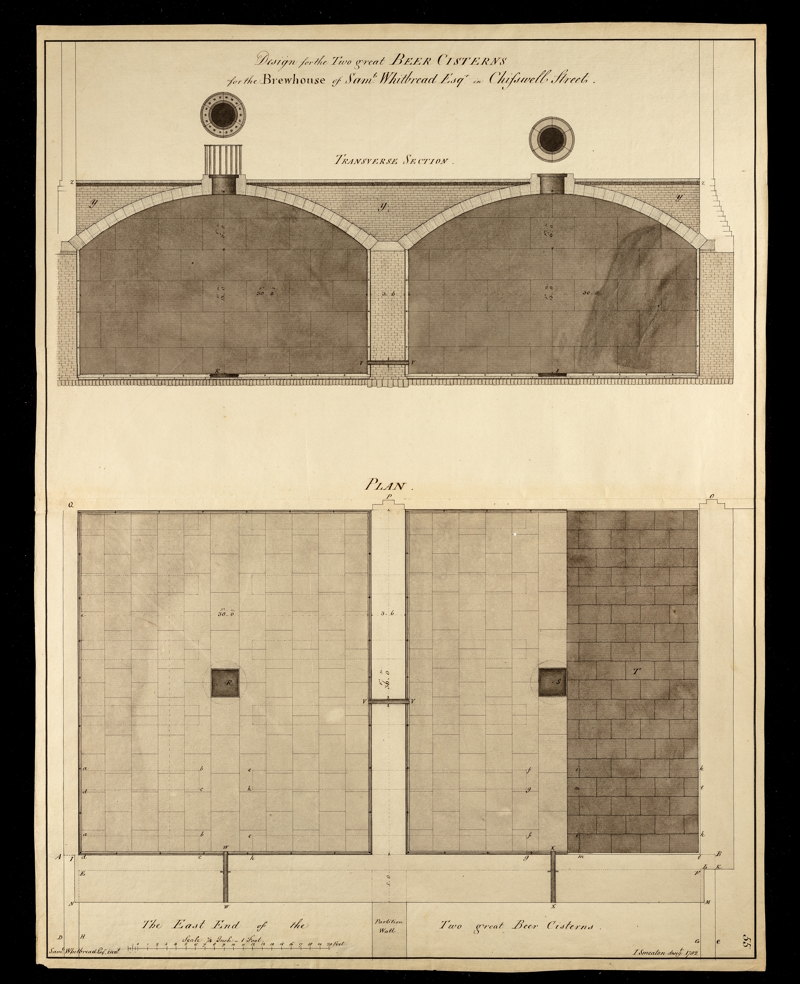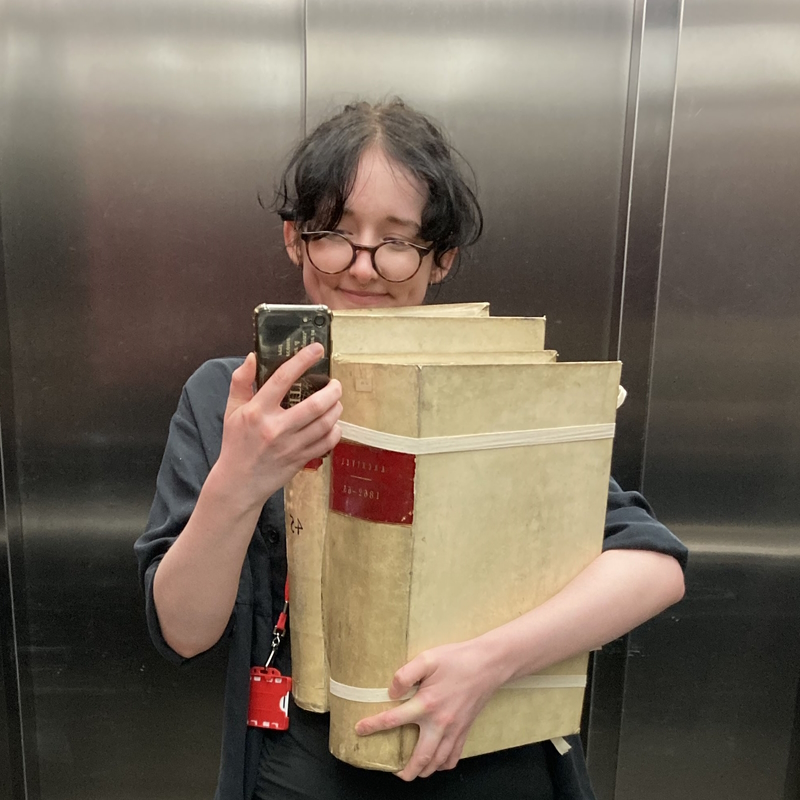Rupert Baker finds tales of beer and brewing in the archives of the Royal Society, along with a poisoned dagger and some tricky handwriting.

It’s Beer Day Britain this Thursday, 15 June. Cheers!
As you’d expect, there are many links between the science of brewing and Fellows of the Royal Society. Let’s look at just a couple of examples from the eighteenth century: firstly, when Joseph Priestley moved to Leeds in 1767 he took advantage of his situation to experiment on ‘fixed air’ (carbon dioxide) and write an article for the Philosophical Transactions, in which he recalled how,
‘Living for some time in the neighbourhood of a public brewery I was induced to make a few experiments on this kind of air, there being always a large body of it, ready formed, upon the surface of the fermenting liquor…’
A decade later, the renowned civil engineer John Smeaton came up with this design for a pair of beer cisterns at the Whitbread brewhouse in Chiswell Street, London (now repurposed as an events venue). The Whitbread dynasty itself produced a scientist who knew a thing or two about gases – Samuel Charles Whitbread FRS, first President of the Royal Meteorological Society.
Twelve years ago, the Royal Society’s curatorial team was given a couple of bottles of Fellow-themed beer from a batch brewed to commemorate Smithson Tennant FRS, the chemist who discovered the elements osmium and iridium. In the interests of research, we consumed the contents, but – being diligent archivists – we steamed off the label and retained it for posterity:

I’m sure there must be other beers named after our Fellows – do feel free to send us samples for our, ahem, label archive.
To investigate how far back the links between beer and the Royal Society go, I turned to JBO/1, the minute book of the very first meetings of the Fellows, which covers the three-year period from the inaugural gathering at Gresham College on 28 November 1660. Sure enough, there’s a relevant entry on 17 December 1662:
‘Sir Robert Moray [one of our Founder Fellows] promised to bring in the way of brewing Ale and Beer in Scotland, and proposed that the whole History of Maulting, and of brewing all sorts of Ale and Beer, might be considered; Whereupon Mr Hill mentioned one Mr Phillips, versed in this matter and fit to serve the Society herein; a proof being given he might then be propounded as Candidate.’
It seems that the proof may have been rather weak, as there’s no record of the election of a ‘Phillips’ (or similar) to the early Fellowship. However, the debate continued to brew through the winter and spring of 1663. On 18 February, ‘Mr Winthrop was acquainted, that Dr Goddard will afford him, necessary accommodations, for the brewing of Beer out of bread of Maitz [maize]’, and three weeks later Winthrop ‘presented the Company with some bottles of beer brewed of maitz-bread, which was a pale well tasted middle Beir. He had the thanks of the Company’. I bet he did.
The last JBO/1 beer-related entry is found in the minutes of the – frankly bizarre – meeting on 1 April, an extract from which you can see in this image:

The relevant section reads:
‘My Lord Brouncker [the President] related a Story of a Lady, recovered from a Consumption, by drinking Ale or Beer, brewed of Water, that run over a Slate-pitt…’.
This sounds slightly dubious, and is sandwiched between the tale of how a ‘Kitten, wounded the last meeting with the poysoned Dagger, sent from the East Indies, was produced alive’, and ‘a letter sent from a French Gentleman … concerning the cutting and whole way of Ordering Melons’. Hmmm – what was the date of that meeting again?
I’ve transcribed the Brouncker reference from the above Journal Book entry, but – provided the screen on which you’re viewing the image is large enough – you can probably decipher most of the words for yourselves. Indeed, Library visitors looking at the early Journal Books often comment on the neatness and legibility of the secretarial handwriting. In this respect, it’s a blessing that the Society didn’t begin in the first decades of the seventeenth century – here’s the earliest beer-themed archival item I could find, and it’s pretty hard going:
It's a 1614 account of ‘Prices allowed for all the beer and ale spent in the King's house’, in CLP/25, an anomalous volume in our Classified Papers collection which includes a substantial number of legal documents from the reign of King James I. I’ve highlighted one instance of the word ‘beer’ which I could just about pick out, but good luck with the rest – you’ll need plenty of practice in deciphering secretary hand, the dominant form of ‘official’ handwriting in the period.
As most of our archives are from post-secretary-hand times, it’s not something I’ve ever needed to pick up for my job. I do, though, vaguely remember hearing a comedian (Bill Bailey?) theorise that the Cyrillic alphabet becomes legible to English speakers if you drink a beer or three and go cross-eyed. Maybe the same applies to secretary hand? I feel a scientific experiment coming on…









